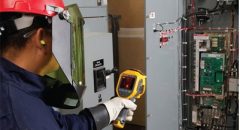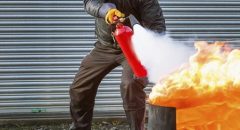What Are Major Accident Hazards?
Why these rules exist
Factories that use or store dangerous chemicals — like gas, fuel, or acids — must follow special safety rules. These rules are made to stop big accidents like gas leaks, fires, or explosions and to protect people, workers, and the environment.
How these rules came to India
After the Bhopal Gas Tragedy (1984), India made stronger laws such as:
- MSIHC Rules, 1989 – for handling and storing hazardous chemicals.
- Chemical Accidents (Emergency Planning, Preparedness and Response) Rules, 1996 – for emergency planning and control.
These laws make sure factories follow safe practices just like international standards.
Who needs to follow these rules
Any factory or warehouse that stores or uses dangerous chemicals above a limit (mentioned in government lists) must follow these safety rules.
Which Industries Are Covered
Common industries
- Chemical plants
- Oil and gas storage
- Paints and solvents
- Pesticides and fertilizers
- Warehouses storing flammable materials
Small vs large sites
Small sites (with a smaller quantity of chemicals) must have basic safety and internal plans.
Large or bulk-storage sites must submit safety reports, do regular audits, and have external emergency plans with local authorities.
How to check if it applies to you
- Look up the list of hazardous chemicals in your state’s MAH Rules.
- Check how much of each chemical you store.
If you have more than the set limit, you must register with the Chief Inspector of Factories and prepare emergency plans.
What Factory Owners Must Do
General safety steps
Every occupier (factory owner) must make sure that:
- Equipment and machinery are safe.
- Chemicals are stored properly.
- Workers are trained about hazards.
- Emergency alarms and firefighting tools work.
For small factories
Keep a written emergency plan, mark exits clearly, train workers on how to act during a fire or leak, and have regular safety checks.
For large or high-risk sites
Prepare a Safety Report, conduct internal and external audits, and share safety data with government agencies and nearby authorities for off-site planning.
Who Checks Compliance
Main authorities
- State Factory Inspectorates
- Pollution Control Boards (SPCBs/CPCB)
- Ministry of Environment, Forest and Climate Change (MoEFCC)
Inspections and penalties
Inspectors can visit at any time, ask for safety records, or stop work if they find unsafe conditions. Breaking the law can lead to heavy fines or even closure of operations.
Regular inspections
Authorities review reports, conduct inspections, and ensure all factories have working safety systems and trained staff.
How to Manage Risks
Make a simple safety policy
Write down who is responsible for safety, how hazards will be managed, and how accidents will be prevented.
Identify possible dangers
Think about what could go wrong—leaks, fires, or explosions — and make a plan for each situation.
Plan for emergencies
Have an on-site emergency plan for what to do inside the factory and an off-site plan with help from the local fire and disaster departments.
Public Safety and Neighbouring Risks
Talk to your community
Let nearby people know about your safety plans and what they should do if there’s an emergency. Transparency builds trust.
Choose your site wisely
Avoid setting up factories too close to houses or schools. Keep a safe distance or create a buffer zone if possible.
Work with nearby industries
If you’re in an industrial cluster, share your emergency plans and coordinate with others to prevent one accident from causing another (“domino effect”).
Real Examples and Safety Tips
What we’ve learned from past accidents
Incidents like the LG Polymers gas leak (Visakhapatnam, 2020) show that skipping audits or ignoring warning signs can cause disaster. Always update safety systems and train your staff.
Prepare for extreme weather
Floods, heavy rain, and heat can damage tanks or safety systems. Check for climate risks and strengthen your site accordingly.
Keep improving
Do safety audits every year. Fix any problems found and review your safety report at least every two years, even if nothing seems wrong.
Simple Checklist for Indian Industries
Step-by-step actions
- Identify if your site handles hazardous chemicals.
- Notify authorities and register under MAH or Chemical Accident Rules.
- Make an internal Safety Policy and Emergency Plan.
- Train your workers regularly.
- Keep first aid, fire control, and alarms ready.
- Conduct yearly safety audits.
- Update your plan whenever you add new materials or equipment.
Key points
- Small sites: Focus on safe handling, awareness, and quick response.
- Large sites: Submit reports, coordinate with authorities, and inform communities.
- All sites: Prevention is cheaper and safer than cleanup after an accident.
Resources
- Chemical Accidents (Emergency Planning, Preparedness and Response) Rules, 1996
- MSIHC Rules, 1989
- State-specific MAH Rules (check your local Factory Inspectorate website)
Need Expert Help?
Don’t wait for an accident to learn safety the hard way.
If you’re unsure about compliance or need help with risk assessment, safety audits, or emergency plans—call the experts.
Aura Safety Risk Consultant helps Indian industries meet safety standards, prepare MAH reports, and train staff effectively.
📞 Call us: 9999402106
🌐 Contact us
Let Aura Safety make your site safer, compliant, and ready for any emergency.
What we offer
Our Services
Identify, evaluate, and control process hazards with expert risk assessments, ensuring safe, reliable, and compliant industrial operations.

Identify, evaluate, and control process hazards with expert risk assessments, ensuring safe, reliable, and compliant industrial operations.

Implement site safety plans, audits, and training to prevent accidents, ensuring safer construction environments and regulatory compliance.

Design, engineer, and audit fire protection systems ensuring reliable performance, asset safety, and adherence to national safety standards.

Empowering workforce with certified HSE, fire, and industrial safety training programs for skill development and regulatory competence.

Create immersive, interactive VR safety training modules for realistic learning experiences in hazard recognition and emergency preparedness.
How it works
Industry Consultation
Project Scoping & Industry Brief
Service Selection
Site Visit & Inspection
Audit & Analysis
Report Submission & Discussion
Frequently Ask Question
Any big fire, gas leak, or explosion that harms people, property, or the environment.
Your state’s Factory Inspectorate and Pollution Control Board monitor and inspect factories.
At least once every year. Big sites must also get an external audit every two years.
Follow the emergency plan, alert the supervisor, and move to safe assembly points.
So they know what to do in an emergency and trust your safety efforts.
Even small sites must follow basic safety steps — training, first aid, alarms, and fire control.
Because floods or heat can damage tanks or safety systems and lead to chemical leaks.
